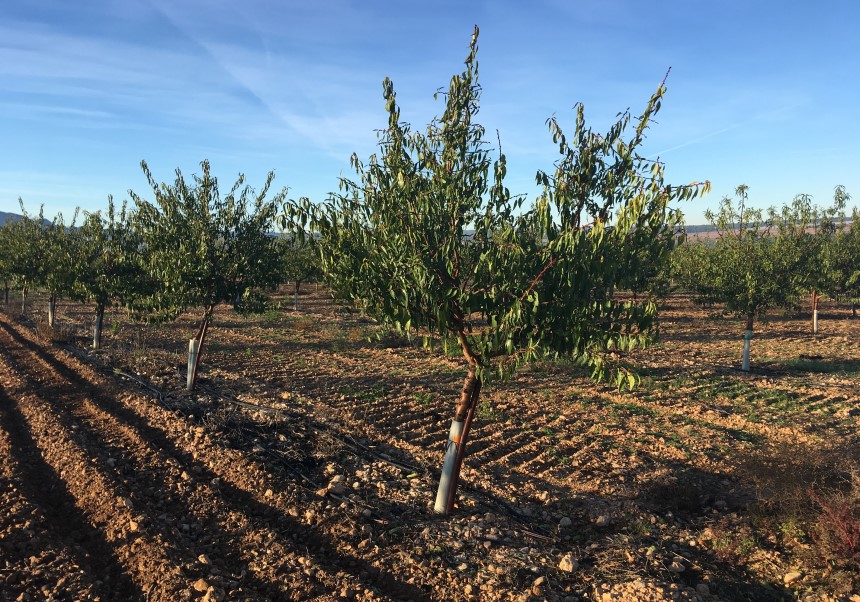
Scientists from the Desertification Research Centre (CSIC-UV-GVA) have analyzed almond tree irrigation strategies to determine the optimal water levels for this crop.
The analysis serves to establish sustainable irrigation protocols under semi-arid conditions such as those found in Spain, the world's second largest producer of almonds.
Researchers from the Desertification Research Centre (CIDE), a joint center of the Spanish National Research Council (CSIC), the Universitat de València (UV) and the Generalitat Valenciana, have developed an analysis based on 15 trials of almond tree irrigation to determine the optimum levels of water to be applied to maximize the efficiency of this crop. The study establishes that, in Spain, under semi-arid Mediterranean conditions, an application of 1,000 millimeters (mm) of irrigation or rainwater gives the almond tree its highest yield, with about 2,500 kilograms per hectare (ha).
The study analyzed two types of irrigation: on the one hand, sustained deficit irrigation of the almond tree, in which there is a continuous level of water shortage throughout the season; and, on the other hand, controlled deficit irrigation, in which there is water deficiency only in certain periods. It is concluded that in a situation of moderate water stress, controlled deficit irrigation is more beneficial for almond trees than continuous deficit irrigation.
According to Diego S. Intrigliolo, CIDE researcher participating in the study, "this research is useful for establishing sustainable irrigation protocols, and its results can be used by farmers to know what irrigation allocations they should apply to maximize yields and to know the response of the tree depending on the water deficit".
"The regulatory bodies of water management in the different Spanish river basins can use these results to carry out a better management of the water allocations that can be released to irrigation communities and make a better balance of the existing water demand in the basin," says Intrigliolo. The work involves the Institute of Sustainable Agriculture (IAS-CSIC); the Andalusian Institute of Agricultural Research and Training, Fisheries, Food and Ecological Production (IFAPA); the Provincial Agronomic Technical Institute (ITAP); the Center for Research and Technology Agroalimentaria of Aragon (CITA) and the University of Seville.
Spain, second largest almond producer in the world
Almond cultivation has experienced strong growth in recent years in the Spanish territory, with Spain being the second largest producer in the world behind the United States. From 580,467 hectares cultivated in 2015, it has evolved to 721,796 hectares, 24% more, according to the data used in the study. However, the low yield provided by the rainfed cultivation of almond trees, only 0.58 tons per hectare compared to 4.68 in the United States, requires the search for a strategy that provides higher yields to the farmer.
The yield problems are compounded by the reduction of water allocation by the regulatory authorities, as evidenced by the study. The Guadalquivir Hydrographic Confederation established an endowment of 250 mm of water for almond plantations in its hydrological plans for 2015, a figure far from the irrigation needs to meet the crop's evapotranspiration (i.e., evaporation from the soil and the surface covered by the trees and transpiration from the leaves of the plants), which can be 800 mm in southern Spain.
For this reason, it is of vital importance the development of research that studies the best use of water in almond trees, determining how the expected production can vary depending on the irrigation allocation that can be carried out, according to the authors of the study.
Reference:
José M. Mirás-Avalos, Victoria González-Dugo, Iván F. García-Tejero, Ramón López-Urrea, Diego S. Intrigliolo, Gregorio Egea. Quantitative analysis of almond yield response to irrigation regimes in Mediterranean Spain. Agricultural Water Management. Volume 279. 2023. DOI: https://doi.org/10.1016/j.agwat.2023.108208
Communication CIDE









